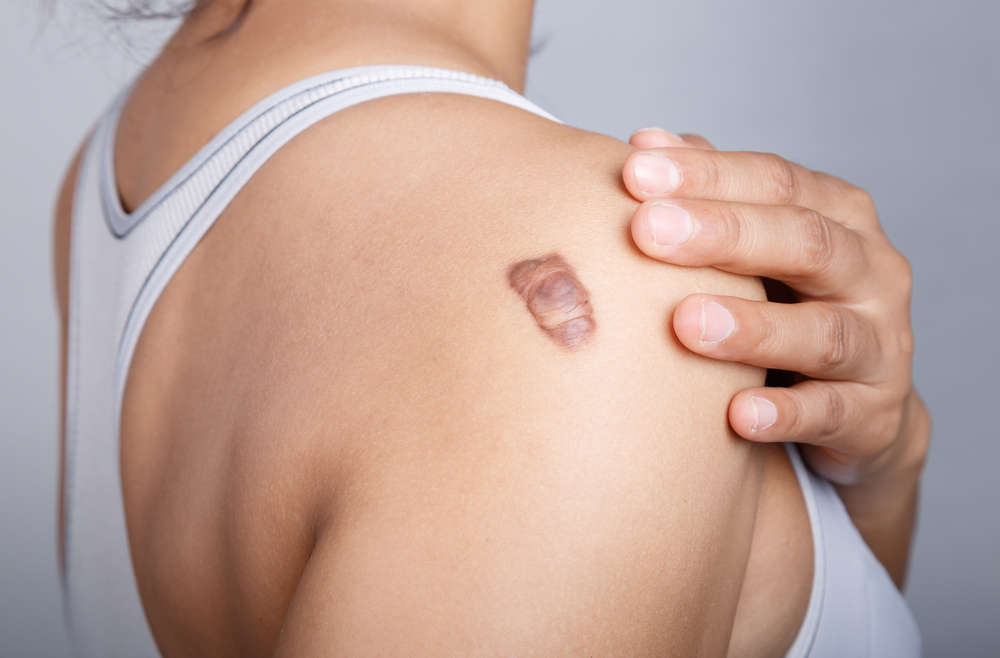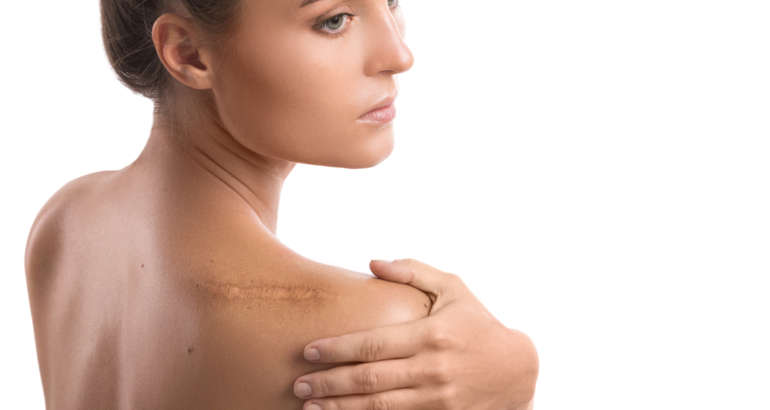Keloid removal is not a procedure that is often discussed.
However, keloids can affect anyone with a scar.
In fact, keloids can develop as a result of even the most common scarring issues including acne, burns, cuts, or even as a result of a piercing or tattoo.
What Is a Keloid?
A keloid can form anywhere on the body however they most often present on the neck, chest, shoulders, ears, and on the back.
The size of your keloid can range from less than one inch to a foot or larger.
Keloids present as a result of your skin’s attempt to repair a scar.
If your body continues to produce scar tissue even after a wound has healed, a keloid forms.
What Do Keloids Look Like?
The first signs of a keloid may be a raised purple or pink scar with a flat surface.
Over time, your keloid will likely darken in color and it may continue to grow for months or even years after an injury.
You may notice that your keloid may have an altered texture, and that it may be itchy, or painful to touch.
Who Is More Likely to Develop a Keloid?
There are certain individuals who may be more prone to developing keloids including the following:
- Asian, black or Latino people
- If you are age 30 or younger
- Teenagers during puberty
- Anyone with a family history of keloids
Keloid Treatment
There are a few different treatment options for your keloid.
Common treatment methods include freezing, corticosteroid shots, laser therapy, silicone sheets, surgery, or pressure treatments.
Keloid Removal Near You
Acworth Dermatology and Skin Cancer Center operates under the direction of Johnathan L. Chappell, MD.
Dr. Chappell is not only a board-certified dermatologist, but he is also a fellowship-trained Mohs surgeon.
To schedule a consultation for your keloid removal at Acworth Dermatology today call us at (678)505-8030.



